Related Research Articles
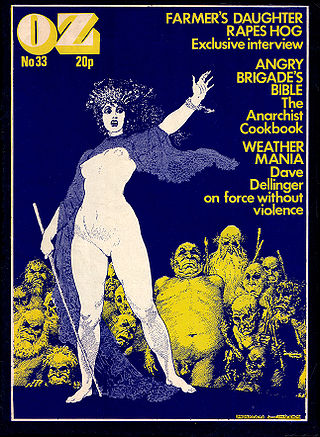
The terms underground press or clandestine press refer to periodicals and publications that are produced without official approval, illegally or against the wishes of a dominant group. In specific recent Asian, American and Western European context, the term "underground press" has most frequently been employed to refer to the independently published and distributed underground papers associated with the counterculture of the late 1960s and early 1970s in India and Bangladesh in Asia, in the United States and Canada in North America, and the United Kingdom and other western nations. It can also refer to the newspapers produced independently in repressive regimes. In German occupied Europe, for example, a thriving underground press operated, usually in association with the Resistance. Other notable examples include the samizdat and bibuła, which operated in the Soviet Union and Poland respectively, during the Cold War.
Liberation News Service (LNS) was a New Left, anti-war underground press news agency that distributed news bulletins and photographs to hundreds of subscribing underground, alternative and radical newspapers from 1967 to 1981. Considered the "Associated Press" for the underground press, at its zenith the LNS served more than 500 papers. Founded in Washington, D.C., it operated out of New York City for most of its existence.
The Underground Press Syndicate (UPS), later known as the Alternative Press Syndicate (APS), was a network of countercultural newspapers and magazines that operated from 1966 into the late 1970s. As it evolved, the Underground Press Syndicate created an Underground Press Service, and later its own magazine.

The Oracle of the City of San Francisco, also known as the San Francisco Oracle, was an underground newspaper published in 12 issues from September 20, 1966, to February 1968 in the Haight-Ashbury neighborhood of that city. Allen Cohen (1940–2004), the editor during the paper's most vibrant period, and Michael Bowen, the art director, were among the founders of the publication. The Oracle was an early member of the Underground Press Syndicate.
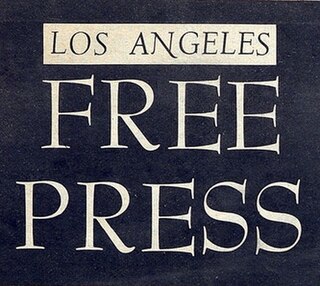
The Los Angeles Free Press, also called the "Freep", is often cited as the first, and certainly was the largest, of the underground newspapers of the 1960s. The Freep was founded in 1964 by Art Kunkin, who served as its publisher until 1971 and continued on as its editor-in-chief through June 1973. The paper closed in 1978. It was unsuccessfully revived a number of times afterward.

The San Diego Door was an underground newspaper that thrived from January 1968 to August 1974 in San Diego and San Diego County, California.
The San Diego free speech fight in San Diego, California, in 1912 was one of the most famous class conflicts over the free speech rights of labor unions. Starting out as one of several direct actions known as free speech fights carried out across North America by the Industrial Workers of the World, the catalyst of the San Diego free speech fight was the passing of Ordinance No. 4623 that banned all kinds of speech in an area that included "soapbox row" downtown. Clashes with the police in the area led to riots, multiple deaths including the deaths of police officers, vigilantism, and the retaliatory kidnapping and torture of notable socialists, including Emma Goldman's manager Ben Reitman. As a direct result of the aftermath of this fight, the neighborhood of Stingaree was razed to the ground and the obliteration of San Diego's Chinatown.
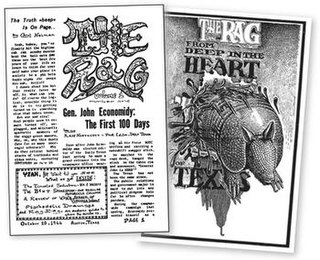
The Rag was an underground newspaper published in Austin, Texas from 1966–1977. The weekly paper covered political and cultural topics that the conventional press ignored, such as the growing antiwar movement, the sexual revolution, gay liberation, and drug culture. It encouraged these political constituencies and countercultural communities to coalesce into a significant political force in Austin. As the sixth member of the Underground Press Syndicate and the first underground paper in the South, The Rag helped shape a flourishing national underground press.
The Columbus Free Press is an American alternative journal published in Columbus, Ohio, since 1970. Founded as an underground newspaper centered on anti-war and student activist issues, after the winding down of the Vietnam War it successfully made the transition to the alternative weekly format focusing on lifestyles, alternative culture, and investigative journalism, while continuing to espouse progressive politics. Although published monthly, it has also had quarterly, bi-weekly and weekly schedules at various times in its history, with plans calling for a return to a weekly format by the end of 2014.

San Francisco Express Times was a counterculture tabloid underground newspaper edited by Marvin Garson and published weekly in San Francisco, California from January 24, 1968, to March 25, 1969, for a total of 61 issues, covering and promoting radical politics, rock music, arts and progressive culture in the Bay Area. It was a member of the Underground Press Syndicate, and sold for 15 cents.
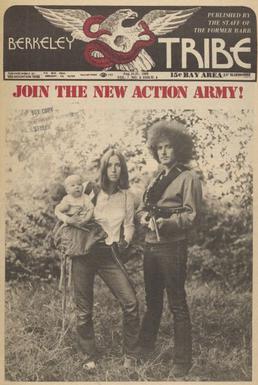
The Berkeley Tribe was a counterculture weekly underground newspaper published in Berkeley, California, from 1969 to 1972. It was formed after a staff dispute with publisher Max Scherr and split the nationally known Berkeley Barb into new competing underground weeklies. In July 1969 some 40 editorial and production staff with the Barb went on strike for three weeks, then started publishing the Berkeley Tribe as a rival paper, after first printing an interim issue called Barb on Strike to discuss the strike issues with the readership. They incorporated as Red Mountain Tribe, named after Gallo's one gallon finger-ringed jug of cheap wine, Red Mountain. It became a leading publication of the New Left.

Spokane Natural was an underground newspaper published biweekly in Spokane, Washington from May 5, 1967, to November 13, 1970, by the Mandala Printshop, and edited by Russ Nobbs. It belonged to the Underground Press Syndicate and the Liberation News Service. The first issue was produced out of a converted barbershop storefront cum bookstore and hangout called the "Hippie Mission" on a cul-de-sac in Spokane, where Russ Nobbs and a visiting friend from the SF Bay area, Ormond Otvos wrote and produced the first 8-page issue on a hand-cranked Spirit duplicator. After several issues of pale blue "Ditto" print on white paper, The Natural moved to colored papers and occasionally colored ink with a Gestetner Mimeograph duplicator. Ultimately, the newspaper was printed on newsprint by sheet fed or web presses by various printers in Spokane, Seattle and Davenport, WA.

Space City! was an underground newspaper published in Houston, Texas from June 5, 1969 to August 3, 1972. The founders were Students for a Democratic Society veterans and former members of the staff of the Austin, Texas, underground newspaper, The Rag, one of the earliest and most influential of the Sixties underground papers. The original editorial collective was composed of Thorne Dreyer, who had been the founding "funnel" of The Rag in 1966; Victoria Smith, a former reporter for the St. Paul Dispatch; community organizers Cam Duncan and Sue Mithun Duncan; and radical journalists Dennis Fitzgerald and Judy Gitlin Fitzgerald.
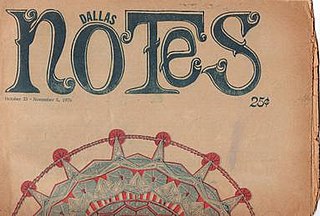
Dallas Notes was a biweekly underground newspaper published in Dallas, Texas from 1967 to 1970, and edited by Stoney Burns, whose father owned a printing company in Dallas. Initially founded by Doug Baker at Southern Methodist University in March 1967, under the title NOTES from the Underground, the first issues were run off after hours on a copy machine at Texas Instruments.
Pittsburgh Fair Witness was a radical counterculture underground newspaper published in Pittsburgh, Pennsylvania from 1970 to 1973. The first 9 monthly issues published starting in February 1970 under the title Grok. Beginning with vol. 1, no. 10 the title was changed to Pittsburgh Fair Witness and the paper shifted to publication once every three weeks. Starting with the Dec. 3–17, 1971 issue, the paper was published on a biweekly schedule until its demise with vol. 4, no. 6. The PFW was staff-owned and published by a collective that called itself "The Commune." An editorial published in the May 26, 1972 issue under the heading "Our Rap" gives the paper's statement of purpose:
"The Fair Witness is published by a non-profit collective and is dedicated to the worldwide movement of people to control themselves—the movement to break down the authoritarian systems of government that are denying us our basic freedoms, that are responsible for needless genocidal wars, the perpetration of minority discrimination, the pollution of our environment and our bodies, the high concentration of power among the wealthy classes, exploitation of the individual, etc. The paper is dedicated to the struggle of all peoples to gain back the right to their own lives, the struggle to raise the consciousness of the world as a whole, the struggle to become independently productive through a working knowledge of the tools at our disposal. As a local paper our most important function concerns the movement here in western Pennsylvania."
New York Ace was an underground newspaper founded in New York City in late 1971 by ex-East Village Other staffers to fill the void created by the demise of the EVO. Ace was published by 21-year-old Rex Weiner and edited by 18-year-old Bob Singer. Published biweekly in tabloid format, the Ace had a print run of 6,000 copies and never succeeded in attracting advertisers.
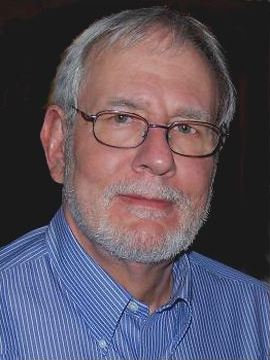
Thorne Webb Dreyer is an American writer, editor, publisher, and political activist who played a major role in the 1960s-1970s counterculture, New Left, and underground press movements. Dreyer now lives in Austin, Texas, where he edits the progressive internet news magazine, The Rag Blog, hosts Rag Radio on KOOP 91.7-FM, and is a director of the New Journalism Project.

The OB Rag was an underground newspaper published between 1970 and 1975 in the neighborhood of Ocean Beach, San Diego, California. The O in the title is also a peace symbol. Other San Diego underground newspapers that dealt with similar issues include San Diego Free Press and The San Diego Door.
References
- ↑ About this paper: San Diego Free Press. Chronicling America, Library of Congress. Retrieved Dec. 8, 2010.
- ↑ The Origins of the Alternative Press in San Diego: The Days of The Door by Doug Porter. OB Rag, Feb. 17, 2009. Retrieved Dec. 8, 2010.
- ↑ San Diego Free Press Will Blog for Food, at typepad.com. Retrieved Dec. 8, 2010.
- ↑ 'Underground Paper Raises City's Temper", by Lee Dye. Los Angeles Times, March 31, 1970, p. 3.
- ↑ Spying on the "San Diego Street Journal" (and Other Americans by David E. Kaplan. U.S. News & World Report, Jan. 6, 2006. Retrieved Dec. 8, 2010.
- ↑ sandiegofreepress.org